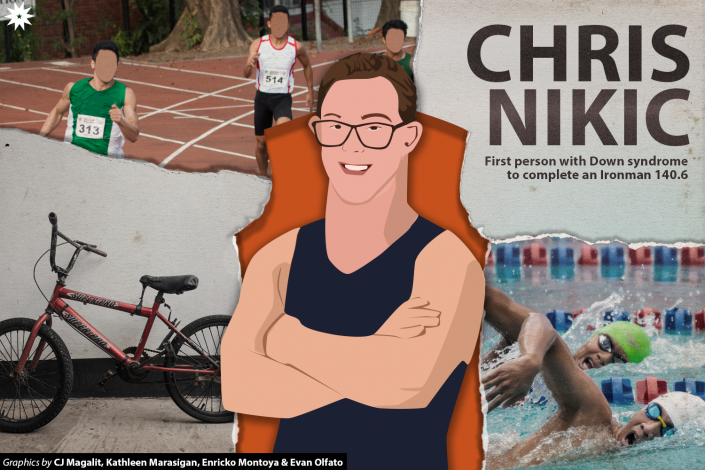Sports changes over the years, evolving as different rules are established and new practices are introduced. The competition in sports leagues has also increased through the advances in creative approaches or strategies in competitive leagues. But amid all changes, sports has remained to be a platform for individuals to showcase their incredible athleticism, both physically and mentally. And one of the most highly-esteemed tests of this ability is the Ironman triathlon. Finishing an Ironman triathlon is no easy feat. As one of the longest-distance triathlon events, it requires athletes to swim 3.8 kilometers, bike 180 kilometers, and run a full marathon of 42 kilometers before finally reaching the finish line—a challenge like no other.
Finishing an Ironman triathlon is an extreme test of physical strength, but for as far as it pushes one’s body, it pushes the mind just as much, if not more. On average, it takes a triathlete over 12 hours to finish one full Ironman race. It is long, grueling, but most of all, taxing on both the body and the mind. As open as triathlons are, it would be easy to think that this kind of event is not for everyone—but Chris Nikic proves that it can certainly be accomplished by anyone.

The journey
By no means did Nikic have it easy in his journey to finishing his first Ironman. According to an article in the New York Times, growing up with Down syndrome entailed several struggles for both Nikic and his family. Because of these challenges, he felt isolated, and somewhat limited. He, however, shared to the Times that he found solace in sports.
As a teenager, he already began competing in the Special Olympics for running, swimming, and basketball; this was where he started his journey toward finishing an Ironman triathlon. Competing in an Ironman requires months of grueling endurance training for all three sports, but despite its physical and mental demands, Nikic had set his sights on the finish line and was determined to cross it.
It was just last October when he decided to compete in an Ironman race, training for it with the help of volunteer coach Dan Grieb, who raced with him in the actual Ironman event last November, finishing the full length of the race by his side.
In every Ironman triathlon, a cut-off finish time of 17 hours limits racers to reach the finish line within that time frame. Though 17 hours sounds lengthy, it is actually difficult to get to the end in that amount of time. But with all of Nikic’s perseverance, at 21 years old, he became the first person with Down syndrome to finish the full 3.8-kilometer swim, the 180-kilometer bike, and the 42-kilometer run, to be called an Ironman—and he did so in 16 hours and 49 minutes, barely making the cut-off. His performance was a true showcase of strength and determination, and quite possibly one of the best examples of Ironman’s tagline, “Anything is Possible”.
Inclusivity in sports
With the evolution of sports over the years, it has not only become a competition, but a way for individuals to explore their identity and their personality, much like how Nikic found himself through this platform. Parents enroll their children in sports organizations to widen their kids’ interest or engage them in physical activities to be more active. Most sports are either played with a team or individually, but the main intention is to defeat your contender.
In the Paralympics, athletes with physical, mental and sensorial disabilities are given the chance to showcase their capability. Different varieties of categories are opened in order to classify athletes by their conditions.
Individuals with disabilities are proven to have a low morale toward themselves due to the reason that they think they have little to no ability to get a grasp of any achievement. Notable athletes that took part in the Paralympics succeeded with their goal while also sharing inspiring stories to people with disabilities. Athletes such as Stephen Miller, who was born with cerebral palsy which affects his balance, competed in field athletics for 20 years and garnered three gold, one silver, and two bronze medals in the Paralympic games alone; meanwhile, Mayumi Narita, a Japanese swimming athlete who won 15 gold medals in just three games did so with myelitis, an inflammation of the spinal cord.
Through the battle, pain, and deprivation these players had to endure, the perseverance of one goal stood out—to show people that everyone has a right to an equal footing in playing sports. Chris Nikic and other disabled athletes bring encouragement to aspiring athletes that beyond any condition, it is possible to accomplish anything.
